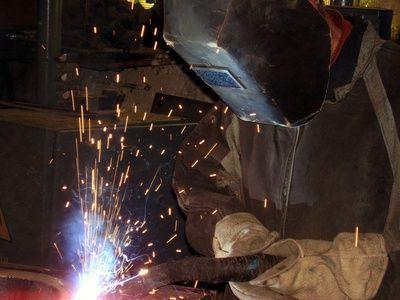Argon-arc welding tig ( T ungsten Internal G as), or welding with a non-consumable electrode - this is when the arc ignites between the tungsten electrode and the parts to be welded. Thus, the transfer of molten metal does not occur in the arc gap. This makes it easier to burn the electric arc and significantly increase its stability. In addition, tig welding reduces evaporation losses, eliminates the possibility of metal spatter and limits the effect of gas from the arc column on molten metal. As a result, the quality of the weld rises to a new, more advanced level.

Tig welding happens on alternating or direct current, and, in the case of the latter, only direct polarity is used, that is, when the parts to be welded are connected to the plus terminal and the non-consumable electrode to the minus terminal. The need to connect in this way is due to the fact that if the terminals are interchanged, there is a likelihood of overheating of the refractory tungsten metal and, consequently, its resistance will significantly decrease. In addition, chipping or melting of the electrode may occur, which will lead to inevitable defects in the weld.
Tig welding implies the presence of the following basic elements in the installation design: an AC or DC power supply, an arc discharge stabilizer, an oscillator, a current control device, a current pulse generator, a gas solenoid valve, and a device for suppressing current components.
Tig welding is the most universal type of metal joining, as it allows welding of a wide variety of materials at any position in space.
A high-quality process of welding parts is achieved due to the fact that it takes a little more time than any other type of welding. In this regard, tig welding is used only when the qualitative characteristics of the resulting weld are of decisive importance.
A distinctive feature of this type of welding is that pure argon is used to join absolutely any materials, while with other types of welding it is necessary to select gas in accordance with the metals being welded.
Tig welding is a rather complicated and painstaking process. Therefore, it requires a specially trained qualified welder to conduct it. The technological process will require sufficient dexterity from it, since it is necessary with one hand to ensure a sufficient and timely supply of filler material, while the welding torch will be in the other hand.
When choosing a welding machine of this kind, it is necessary to be guided by the following considerations:
It is necessary to determine the power source of the welding machine.
Assess the complexity and amount of work ahead.
Take into account the type of current consumed: direct or alternating.
You must also know that some welding machines can use both direct and alternating current. This is necessary for welding different materials, for example, aluminum and steel. Welding units have a fairly wide range of current values from 3 to 500 A.